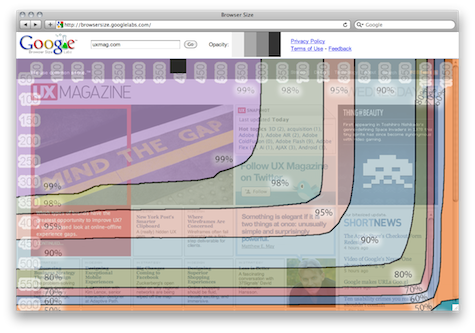Google Labs has cooked up another interesting tool, called Browser Size. It demonstrates how much—or, sadly, how little—of a website is visible without scrolling. Enter a site URL to see an overlay of what percent of users will be able to see regions of the site “above the fold.” This is affected by screen resolution, of course, but also by the size of the browser chrome, the size and number of toolbars installed, and other considerations.
I was pleasantly surprised to see just how much is actually above the fold for 90% of users: roughly 975 x 500px. I’d be interested to see a different overlay in this tool that, rather than showing how much is initially visible to a user, shows how likely users are to view a given region. Of course the closer to the upper-left the region is, the greater the probability, but what about the content below or outside the fold? This would make clearer the magnitude of the importance of content being in a certain position. And something that’s below the fold vertically is more likely to be viewed than something that the user has to scroll horizontally to. It’d also be useful if you could select parameters about user demographics and system specs to see how the visibility of page content changes.





